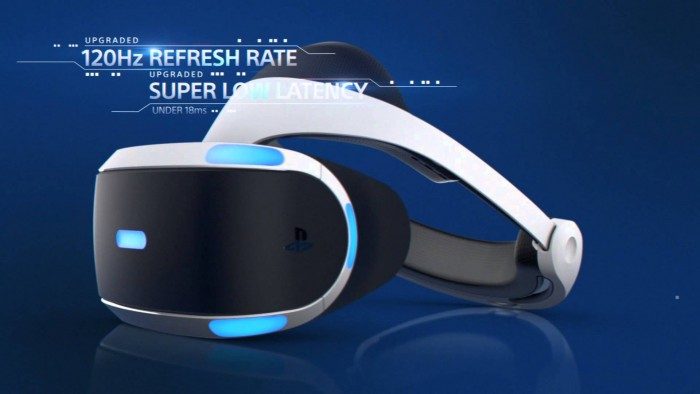Last night, Sony’s Shuhei Yoshida, President of Sony’s Worldwide Studios for Sony Computer Entertainment Inc., proudly announced that their Playstation 4 VR Headset Project Morpheus was coming to market in the second half of 2016. In the mean time, they revealed the latest Project Morpheus prototype was at GDC and contained numerous enhancements over the first demonstrated version.
A year’s a long time in VR and Sony managed to pull off a surprising reveal at GDC 2014 when it unveiled it’s VR Headset designed for their Playstation 4 console. It was sleek, it looked great and more importantly, it worked really well. Seemingly Sony had been working on virtual reality in secret for some time, evidenced by the prototype’s advanced stage of development. At the time it certainly impressed, despite falling short in some areas when compared with the Oculus Rift DK2, also unveiled at GDC 2014 – most notably, Sony’s use of an LCD display – not capable of low persistence.
See Also: Project Morpheus GDC 2015 Media Event Liveblog @ 3pm PST
With the latest prototype, Sony has addressed that point – and then some. V2 of Morpheus now sports an OLED panel, with 1920 x 1080 pixels featuring low persistence technology (as seen in the DK2). But the kicker here is that the panel is capable of pumping out images at 120Hz in comparison to the DK2’s 75Hz. In theory, this should make a noticeably difference to fluidity and stability of the image – reducing motion sickness and increasing the chances of true immersion. If, of course, the machine powering the display can deliver images at that rate.
Yoshida was quick to address concerns over the Playstation 4, which despite being at the cutting-edge in console hardware, falls some way short of today’s PC rendering prowess, by stating that via a software update the PS4 would support 120Hz display rates when connected to the Morpheus.
To be clear however, that’s merely sending a 120Hz image – the real challenge for developers on Playstation is to render 120 images per second to keep up with that threshold. We’ve already seen myriad issues with the Oculus Rift DK2 when a rock solid 75Hz is not delivered to the unit, resulting in judder and other unpleasant side effects. It’ll be interesting to see to what level of fidelity the PS4 is capable of delivering at 120Hz / 1080p.
Luckily, the Road to VR team were on hand to get to grips with the latest prototype after yesterday’s event and we’ll have hands on reports for you in a few hours. In the mean time, here’s a full breakdown of the latest technical specification differences and features highlighted in the above video, pulled from Sony’s latest press release:
OLED display
In exchange for the 5-inch LCD, the new Morpheus VR headset is equipped with a 5.7-
inch 1920 x RGB x 1080 resolution OLED display. This new screen expands the field of
view and enables low persistence, removes motion blur and flicker, both of which build
immersion and help deliver the sense of presence for the player.
120fps output
By adopting OLED, Morpheus now supports 120fps output, and is able to render 120
images per second. Furthermore, via a system software update, all PS4 systems will
handle native 120fps output when connected to Morpheus. By combining the OLED
display’s high refresh rate and the power of the PS4 system, Morpheus produces
amazingly smooth visuals and achieves the next level of immersion.
More accurate tracking and reduced latency
To make positional tracking more accurate with PlayStation®Camera, the new prototype
has added three more LEDs to the headset for a total of nine. Morpheus continues to
support 360 degree tracking, and additional LEDs improve robustness and stability.
Additionally, the overall system has been optimized to reduce latency between the
physical movement of a player’s head and rendering on the headset’s screen.
User-friendly design
While inheriting the original visor style headset design that reduces the pressure on the
players’ face, the new Morpheus prototype features a single band and a quick release
button, which makes it easier for players to put it on and take it off. Other components
have also been adjusted and configured to make the headset lighter, so that players do not
find the headset cumbersome or uncomfortable to use.
Developers will be able to use the new prototype to create Morpheus content for PS4, a
robust and well-defined platform that has sold over 20.2 million units*1 within 16 months of its launch. In addition to the enhancements, the new prototype will continue to support 3D audio and social screen, a feature that outputs the same gameplay that’s within the Morpheus headset to a TV so additional players can interact. Furthermore, SCE will provide an SDK that converts 60fps images to output in 120fps, which will allow developers to bring their content that was being developed on the prior prototype to the new Morpheus prototype.


